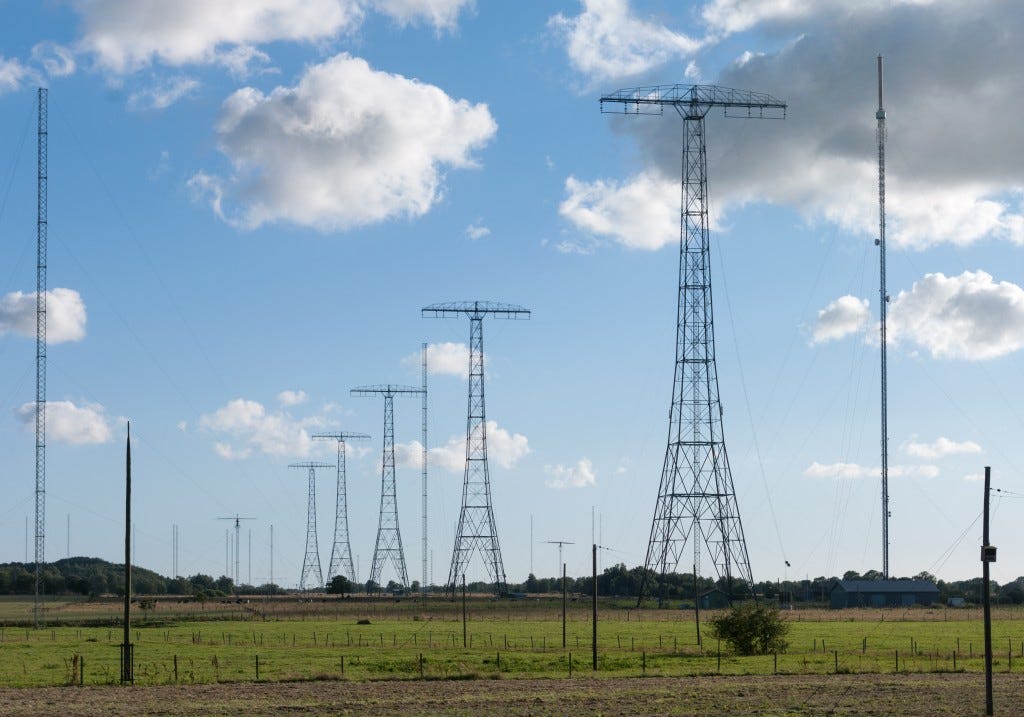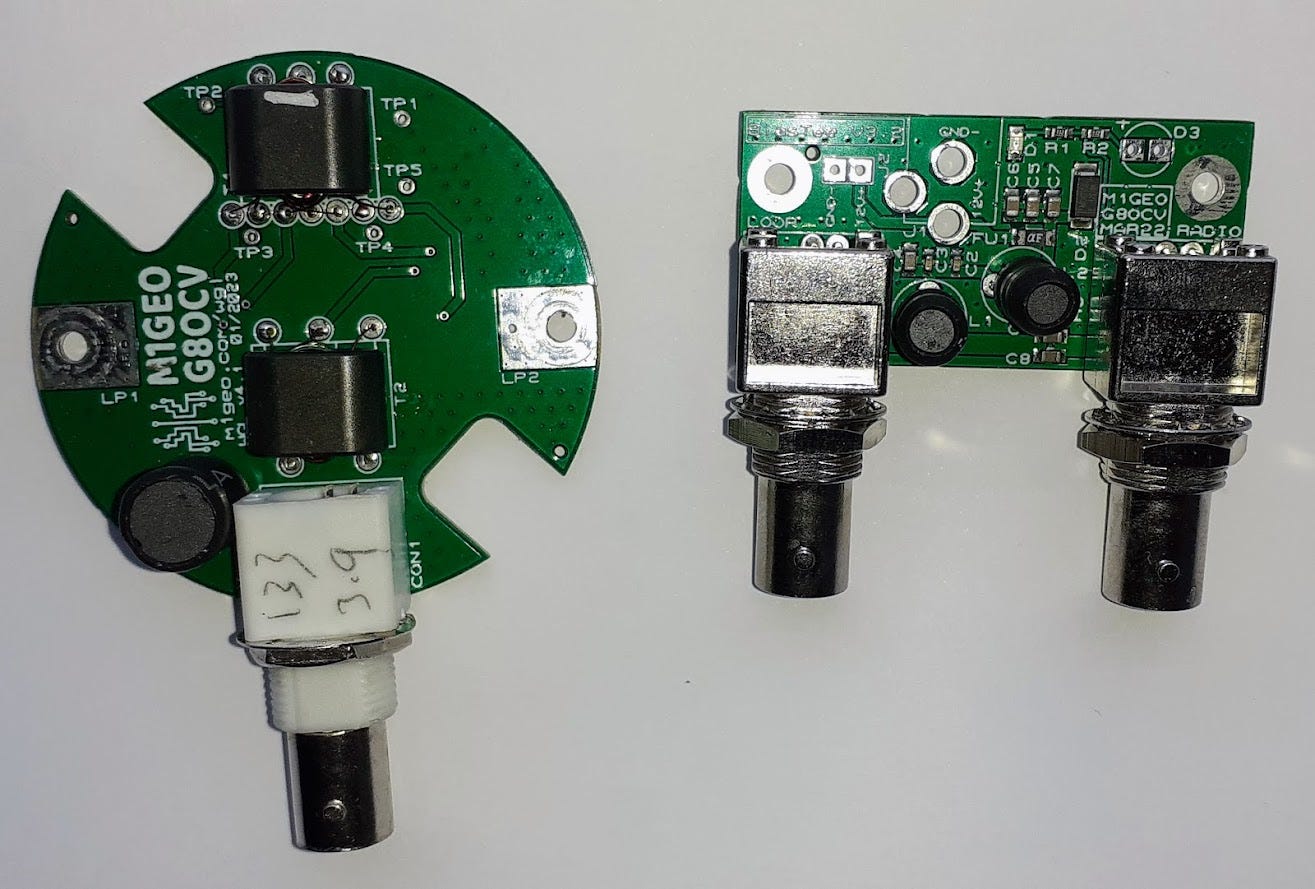I was lucky, a couple of days ago, to randomly visit the Alexanderson Association website, where a notice had been hurriedly put up of tuning tests of SAQ to take place ahead of Alexanderson Day transmissions on July 02, 2023.
The system I use to listen-in to SAQ is fairly standard, being a 3m-circumference RG213 coax loop connected to a WellGood amplifier. You can find out about that and, as I would thoroughly recommend, buy a set of boards, here.
The signal I heard was similar to that received in February, being about S2-3. Readable, but not very strong.
For Alexanderson Day itself, I first listened using the same set-up, and again the signal was quite weak. But I had a backup plan ready for action!
For the second transmission, in the afternoon, I had thrown what used to be the RG213 coax feed for a 1/4 wave vertical up into a modestly-tall hedge. Only the outer/sheath is connected up; the centre is redundant. This happened to measure 18 metres in circumference, most of it horizontal and, at the bottom, touching the ground, and maybe 2.5m either side being vertical.
The result was quite spectacular! The previously S2, sometimes S3 signal was now up to a solid S6+ signal, and very easily readable.
You can listen to the whole second transmission here, starting with a brief period of fine-tuning by staff at the control panel key. The standard VVV de SAQ is followed by the Alexanderson Day message. The motor control feedback circuit, 99 years old, is so good that the frequency drift during the body of the transmission typically varies by no more than a couple of Hertz. Quite astonishing for such an enormous spinning mass, really.
The receiver I use is a SDRPlay RSP1a, which I can again really recommend as an excellent wide-spectrum receiver. SDRuno or SparkSDR software are both good, though I prefer the former as it is specifically designed for the SDRPlay units.



